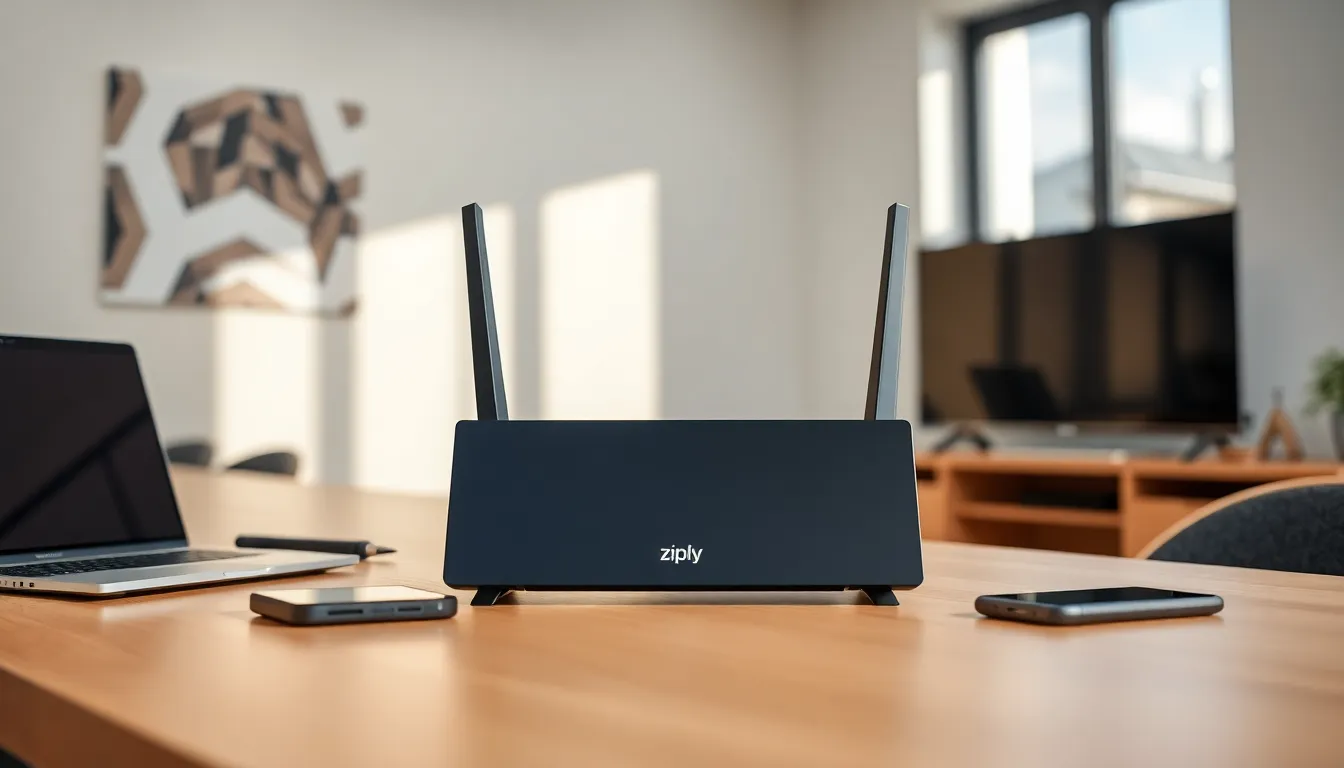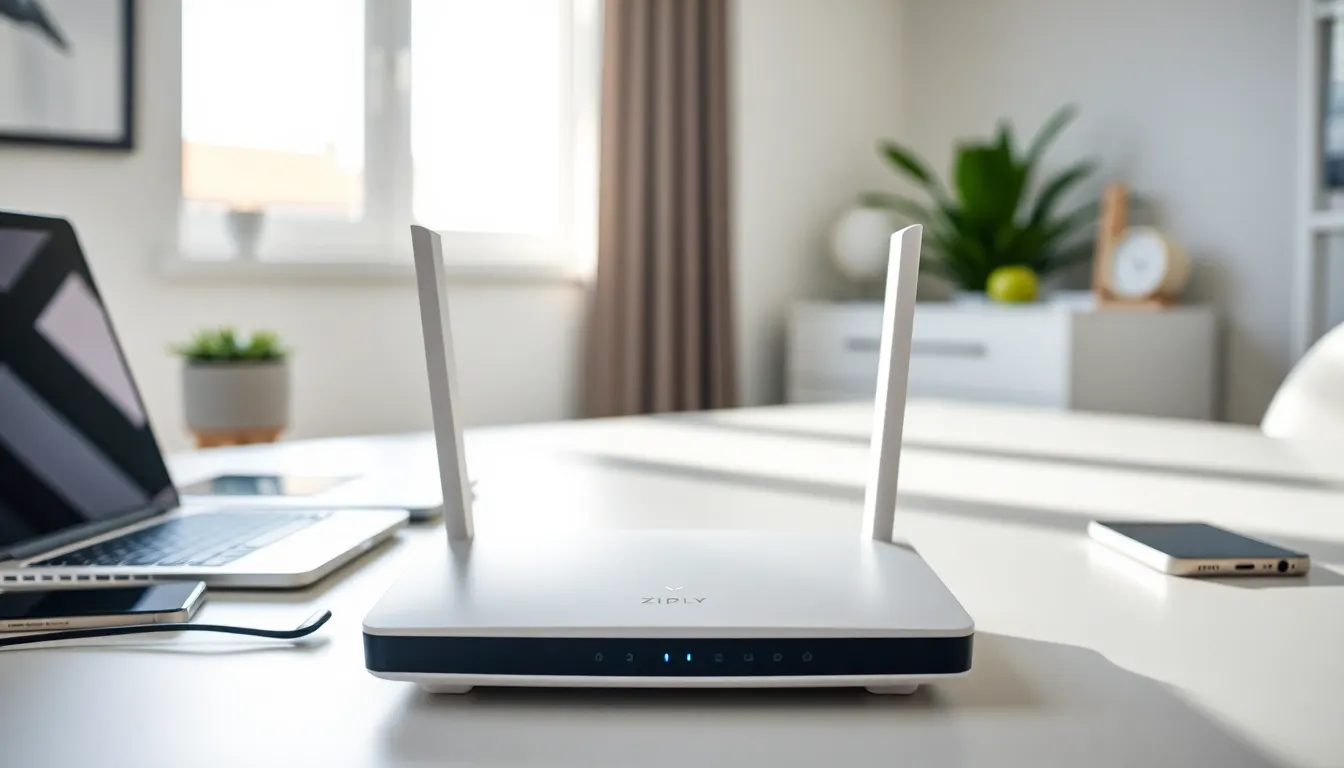When it comes to internet speed and reliability, the Ziply Fiber router stands at the forefront of home networking solutions. Ever dreamt of binge-watching your favorite shows without buffering interruptions? Or perhaps video calls without the dreaded lag? If so, this comprehensive guide could be your golden ticket. We’ll dissect everything you need to know about the Ziply Fiber router, from its distinctive features to optimizing its performance. So, prepare to unlock your internet’s full potential and maybe even enjoy a chuckle or two along the way.
Ziply Fiber Router

A Ziply Fiber router is a powerful device designed specifically for those who crave high-speed internet connections. It serves as the gateway to your online world, connecting your devices, whether they be laptops, smartphones, or smart TVs, to Ziply Fiber’s advanced fiber-optic network. Unlike traditional routers that often struggle under pressure, Ziply Fiber routers deliver consistent, lightning-fast broadband, making it a smart choice for gamers, streamers, and households with multiple users. In essence, it transforms how users experience the internet, providing speeds that can race past 1 Gbps under optimal conditions.
Key Features of Ziply Fiber Routers
Ziply Fiber routers boast an impressive array of features aimed at enhancing the user experience. First and foremost, there’s the exceptional speed. With support for up to 2 Gbps, these routers handle heavy online activity seamlessly, ensuring that everyone in the household enjoys high speeds without competing for bandwidth.
Besides, Ziply Fiber routers come equipped with advanced Wi-Fi 6 technology. This not only boosts speed but also improves efficiency and coverage. Think of it as adding a turbo boost to your internet connection, perfect for everyone from casual browsers to hardcore gamers. Also, the routers prioritize security with robust encryption to protect your personal data against online threats.
Setting Up Your Ziply Fiber Router
Setting up a Ziply Fiber router is a straightforward process, even for those who might not consider themselves tech-savvy. Start by unboxing the router and identifying the essential components: the router, power adapter, Ethernet cables, and user manual.
- Connect to Power: Plug the router into a power outlet and switch it on. Look for any indicator lights that signal it’s ready.
- Ethernet Connection: Use the Ethernet cable to connect the router to your Ziply Fiber modem. This step is crucial for establishing a stable internet connection.
- Wireless Configuration: Access the router’s settings either via an app or web browser (details provided in the manual). From there, you can set your Wi-Fi name and password to your liking.
- Connect Devices: Finally, connect your devices to the newly configured network. Voila. You’re now ready to surf the web at impressive speeds.
Optimizing Your Ziply Fiber Router Performance
To get the most out of your Ziply Fiber router, optimization is key. Here are several tips to ensure peak performance:
- Firmware Updates: Regularly check for firmware updates. These updates often contain crucial security patches and enhance performance.
- Router Placement: Position the router in a central location within your home. This placement minimizes barriers between the router and connected devices, maximizing signal strength.
- Use Quality Cables: Invest in high-quality Ethernet cables if you prefer wired connections. Poor quality cables can bottleneck speeds, negating the benefits of a fiber connection.
- Limit Connected Devices: If multiple devices are hogging bandwidth, consider prioritizing your most important devices through the router settings. This setting ensures smoother operation for tasks that require higher speeds.
Common Issues and Troubleshooting Tips
Like any tech device, you might encounter issues with your Ziply Fiber router. Here are some common problems and their solutions:
- Slow Speeds: If your speeds are slower than expected, restart the router by unplugging it for about 30 seconds. This action can clear temporary issues.
- Connectivity Drops: Frequent disconnections can often be fixed by ensuring your firmware is up to date and checking for interference from other devices, such as microwaves or cordless phones.
- Wi-Fi Range Problems: If the signal weakens in certain areas of your home, consider investing in Wi-Fi extenders to increase coverage. Alternatively, adjust router placement for optimal broadcasting.
Remember, Ziply support is just a call away, and they can assist in diagnosing persistent issues.
Comparing Ziply Fiber Routers to Other Brands
When considering a new router, comparing options is crucial. Ziply Fiber routers shine notably against competitors. For instance, many routers from other brands offer comparable speeds, yet struggle with multiple devices due to outdated technology.
In contrast, the standout feature of Ziply routers is their implementation of Wi-Fi 6, which not only increases speed but also enhances the capacity to handle several connected devices simultaneously. This feature is particularly beneficial in today’s tech-heavy households where smart devices are commonplace. Also, Ziply’s customer service reputation is excellent, with many users praising their responsive support team.

